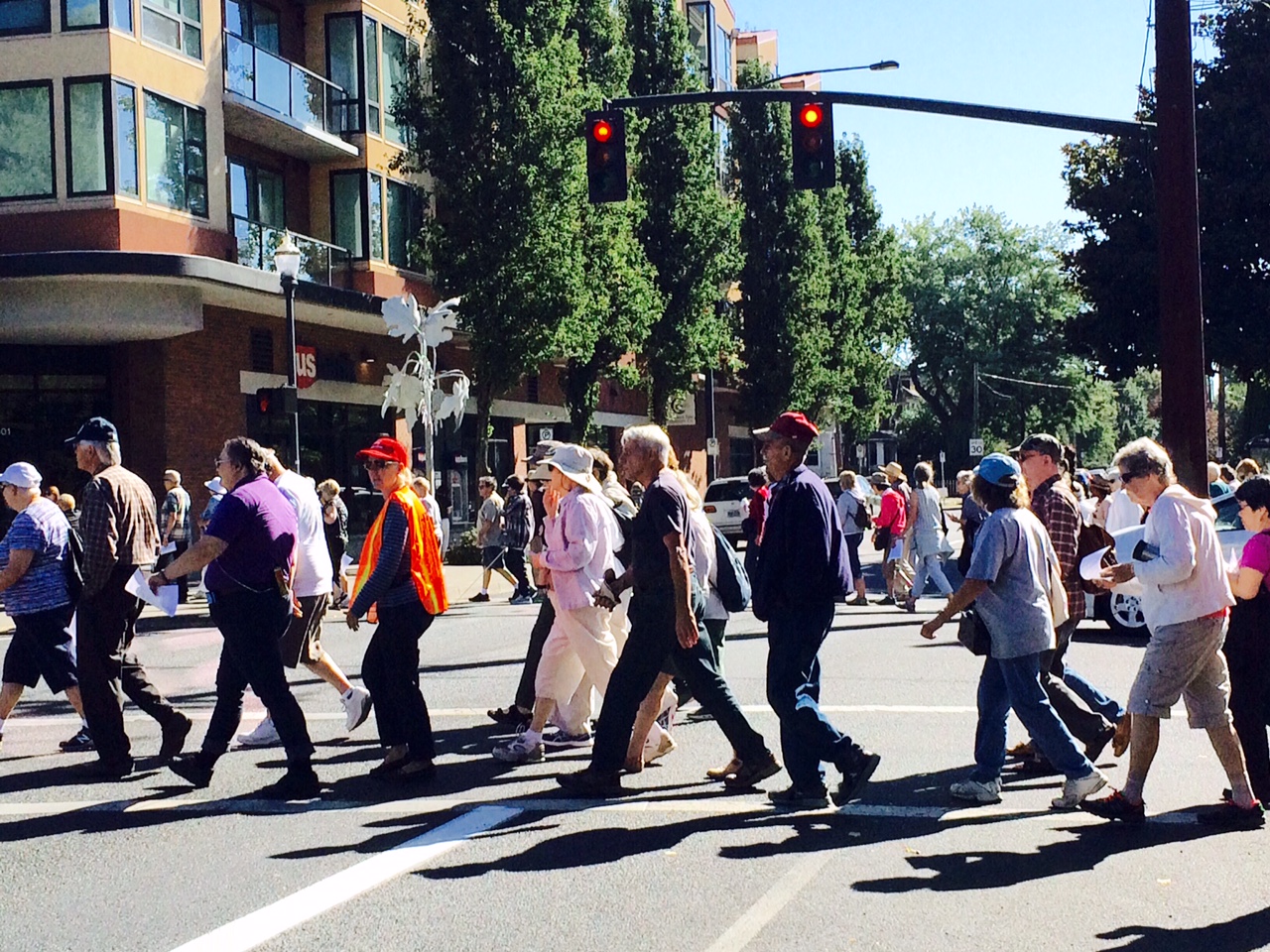AARP Hearing Center

by Elaine Friesen-Strang
It's just so hard to keep those pesky smart phones out of our hands. If we put them on the passenger seat, they are beguiling, tempting us to interact with everyone else, except those sharing the road with us. They work their way into our ears when we go out for a run, or a walk, because we can't leave them at home alone. Yes, they may prove to be a distraction for others, but we know how to multi-task. The problem isn't me--it's you.
That's what AAA Foundation for Traffic Safety found in a recent survey. "The vast majority of motorists believe they are more careful than others on the road, though most of them are not making safe decisions while behind the wheel", reports Peter Kissinger, the Foundation CEO. 70% of drivers admit they talked on the phone in the last month. Nearly 1 in 3 say they do it on a regular basis. 42% read texts or emails in traffic, 31% confessed to sending them while driving.
Pedestrians also share the blame. Alan Hilibrand, MD, of The American Academy of Orthopaedic Surgeons (AAOS), says "the number of injuries to pedestrians using their phones has more than doubled since 2004 and surveys have shown that 60% of pedestrians are distracted by other activities while walking." AAOS commissioned a Distracted Walking Study in 2015. 78% of US adults say it's other people who walk distracted, only 29% admit to doing so themselves. "Nearly 4 out of 10 Americans report they personally witnessed a distracted walking accident". The research also shows that texting or reading a text alters our gait, speed and walking patterns. Pedestrians who text were four times more likely to display at least one unsafe crossing behavior. Hilibrand says "more people are falling down stairs, tripping over curbs and other streetscapes, stepping into traffic". We're looking down, not up.

On the upside, overall traffic deaths are down. We may not necessarily be better drivers, but we're driving in safer cars. The downside: the Governors Highway Safety Association reports the number of pedestrian fatalities increased 10% last year. That comes after a 19% jump in the previous five years. The association's research is pointing to the largest percentage of pedestrian deaths in 25 years--a projected 15% of all traffic fatalities in 2015. Technology has yet to figure out how to make human beings less vulnerable. Cars will win every time.
I consider myself a safe driver. I'm the annoying one that actually goes the speed limit and I stop for pedestrians standing on corners. My phone sits quietly and patiently in my purse. Yet I drive in fear I might hit someone on foot or bike because "they came out of nowhere". While there's mutual responsibility--whether you're behind the wheel or using human powered transportation--when a collision happens, it's not a level playing field. Until our phones become so smart they will alert us of approaching danger or apply the brake on our behalf, there are times they don't deserve our attention. The success of Vision Zero lies in what's not in our hands.
--------------------------------------------------------------------------------------------------------
Welcome to Livable Oregon.
What makes a community livable? What do neighborhoods need to help people of all ages live active, engaged lives? Livable Oregon explores the features of age-friendly communities, the people who help create them, and what we can do to make our neighborhoods in Oregon a great place for everyone.
This blog takes its lead from the AARP Livable Communities Initiative which seeks to improve the quality of life for older adults by promoting the development of safe, accessible, and vibrant environments. AARP Livable Communities policies address issues such as land use, housing, and transportation which are vital to developing communities that facilitate aging in place.
About our lead blogger:
My name is Elaine Friesen-Strang. I understand the need for lifelong, livable communities as a mother who raised two children, a daughter who helped care for her father, a professional guardian who served adults with developmental disabilities, and a woman who is experiencing the mixed blessings of aging. Volunteering for AARP empowers me to help make my neighborhood and city a more livable, sustainable place for people of all ages.































































